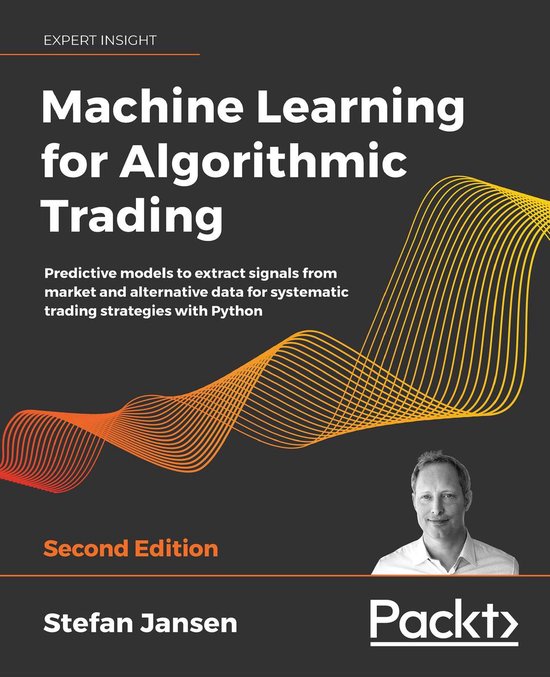Hands on machine learning for algorithmic trading

2 - 3 weken
With the help of this book, you'll build smart algorithmic models using machine learning algorithms covering tasks such as time series forecasting, backtesting, trade predictions, and more using easy-to-follow examples. By the end, you'll be able to adopt algorithmic trading in your own business and implement intelligent investigative strategies.
Explore effective trading strategies in real-world markets using NumPy, spaCy, pandas, scikit-learn, and Keras
Key Features Implement machine learning algorithms to build, train, and validate algorithmic models Create your own algorithmic design process to apply probabilistic machine learning approaches to trading decisions Develop neural networks for algorithmic trading to perform time series forecasting and smart analytics Book DescriptionThe explosive growth of digital data has boosted the demand for expertise in trading strategies that use machine learning (ML). This book enables you to use a broad range of supervised and unsupervised algorithms to extract signals from a wide variety of data sources and create powerful investment strategies.
This book shows how to access market, fundamental, and alternative data via API or web scraping and offers a framework to evaluate alternative data. You'll practice the ML workflow from model design, loss metric definition, and parameter tuning to performance evaluation in a time series context. You will understand ML algorithms such as Bayesian and ensemble methods and manifold learning, and will know how to train and tune these models using pandas, statsmodels, sklearn, PyMC3, xgboost, lightgbm, and catboost. This book also teaches you how to extract features from text data using spaCy, classify news and assign sentiment scores, and to use gensim to model topics and learn word embeddings from financial reports. You will also build and evaluate neural networks, including RNNs and CNNs, using Keras and PyTorch to exploit unstructured data for sophisticated strategies.
Finally, you will apply transfer learning to satellite images to predict economic activity and use reinforcement learning to build agents that learn to trade in the OpenAI Gym.
What you will learn Implement machine learning techniques to solve investment and trading problems Leverage market, fundamental, and alternative data to research alpha factors Design and fine-tune supervised, unsupervised, and reinforcement learning models Optimize portfolio risk and performance using pandas, NumPy, and scikit-learn Integrate machine learning models into a live trading strategy on Quantopian Evaluate strategies using reliable backtesting methodologies for time series Design and evaluate deep neural networks using Keras, PyTorch, and TensorFlow Work with reinforcement learning for trading strategies in the OpenAI Gym Who this book is forHands-On Machine Learning for Algorithmic Trading is for data analysts, data scientists, and Python developers, as well as investment analysts and portfolio managers working within the finance and investment industry. If you want to perform efficient algorithmic trading by developing smart investigating strategies using machine learning algorithms, this is the book for you. Some understanding of Python and machine learning techniques is mandatory.
- 1 Bekijk alle specificaties
